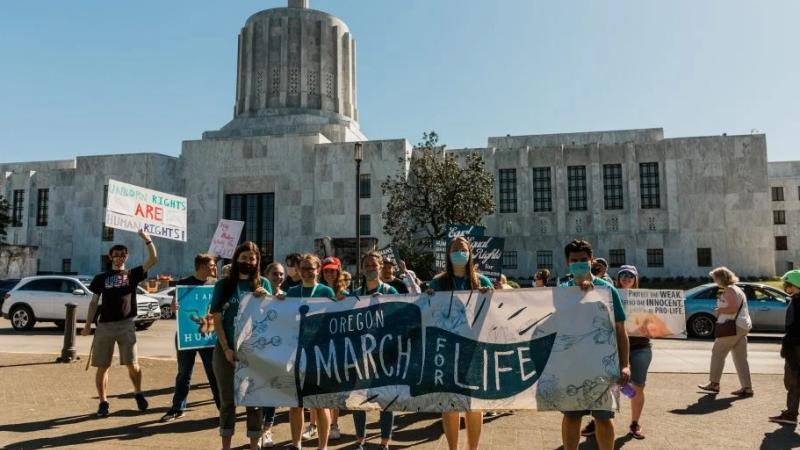Legal abortions increasing across U.S. despite new restrictions post-Dobbs, data shows
The data "has been heavily influenced by the Biden administration’s aggressive push to deregulate and push mail-order abortion pills," one expert said. But cloudy data and incomplete reporting has been a sticking point for those on both sides of the issue.
Legal abortions appear to have increased by more than 11% during the first six months of 2023 compared to the same timeframe in 2019 when abortion was legal as a matter of federal law, according to new data. The rise came even as the procedure is banned in more than a dozen states.
The data shows that as many as 511,000 legal abortions are estimated to have been performed during the first six months of 2023 in the 36 states and Washington, D.C., where the procedure is still legal, according to data released Thursday from the pro-choice Guttmacher Institute.
Guttmacher estimates 916,460 abortions occurred in 2019. Taking half of that number to correspond to half a year, the number of abortions appears to have increased by more than 11% from 2019 to 2023.
At the absolute minimum, 492,000 legal abortions were performed during the time frame, while the maximum estimate is nearly 531,000. The institute collects data directly from abortion providers, but the numbers vary due to incomplete reporting.
The demographic most likely to have an abortion are women between the ages of 20 and 24 years old, and race-based statistics show that 38.7% are white.
The rise in abortions following the Supreme Court's landmark abortion decision in Dobbs v. Jackson Women's Health in June 2022 can be attributed to several factors, experts say.
"What we’re seeing in this data set isn’t a new trend. The increase in abortions pre-dates the June 2022 Dobbs decision and has been heavily influenced by the Biden administration’s aggressive push to deregulate and push mail-order abortion pills," Tessa Longbons, a senior research associate at the pro-life research group the Charlotte Lozier Institute, told Just the News.
Calling that assertion into question, the Pew Research Center reports that these numbers do not include abortions induced by pharmaceutical means obtained outside a clinical setting.
Several states enacted pro-choice laws after the Supreme Court's overruled Roe v. Wade, and the Guttmacher Institute says data "shows that many states that are in close proximity to states that banned abortion saw much sharper increases in monthly abortion numbers than would likely be explained by a continuation of earlier trends." Much of this is likely due to out-of-state patients traveling to nearby states to receive an abortion.
"You have two forces at work," Middlebury College economist Caitlin Myers said after viewing the Guttmacher report, according to The New York Times. "On the one hand, you have people trapped in ban states, and, on the other, you have people in a whole lot of the country where access has improved."
Longbons also said that reports on abortion statistics are "incredibly incomplete" and the Lozier Institute has "been critical of the fact that there is no federal reporting standard."
Guttmacher's data for 2019 is significantly higher than that reported by the U.S. Centers for Disease Control and Prevention, which found nearly 630,000 abortions occurred in the U.S. However, the government's data is skewed as it collects data from the central health agencies of each state but California, Maryland and New Hampshire did not provide data.
The CDC has not published abortion-related data since the Supreme Court's Dobbs decision.
"The absolute chaos in the state’s abortion reporting system demands federal reporting laws. We encourage the pro-abortion side to join us in calling for complete reporting data from states. Now more than ever, we need comprehensive, objective data on abortion," Longbons added.
















